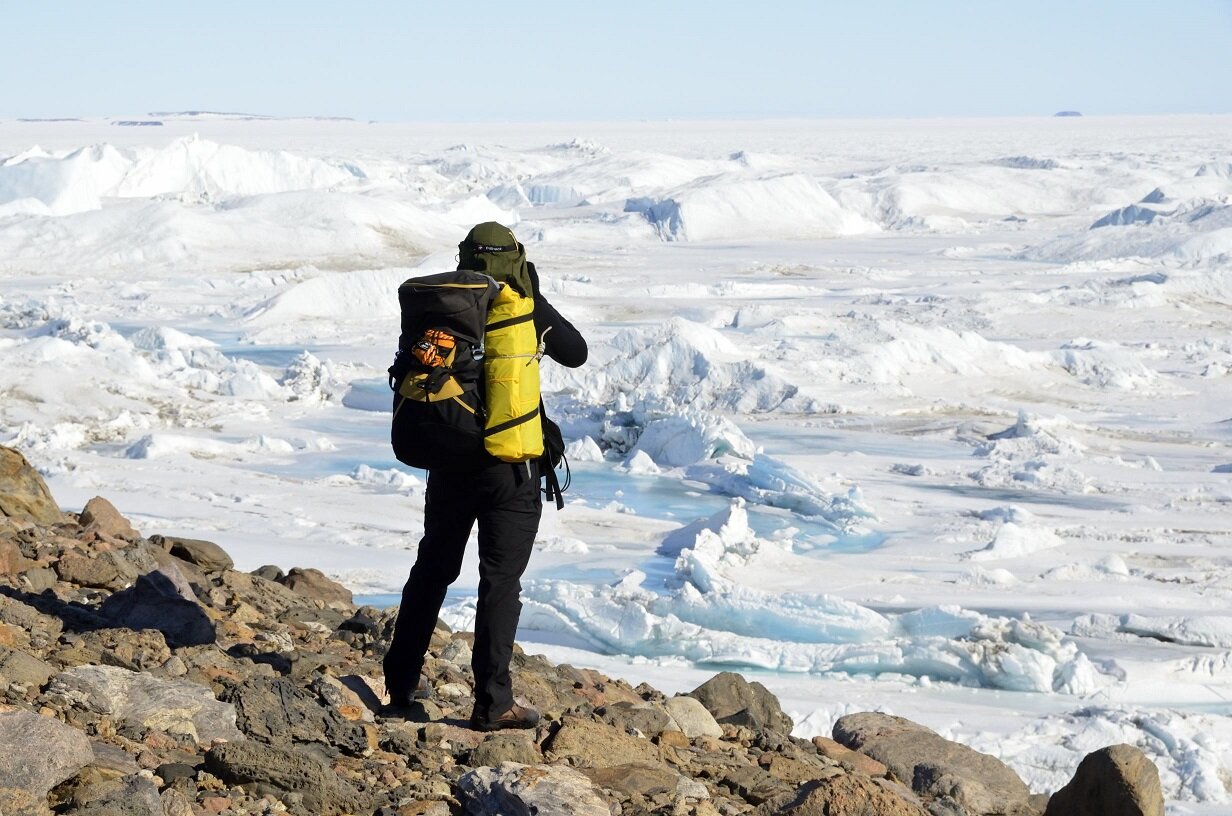 |
| Fieldwork in Queen Mary Land collecting geophysical and geological data. Credit: Tobias Stål |
Antarctica is known for its vast ice sheets, which cover nearly the entire continent and contain the majority of the Earth's fresh water. While these ice sheets are a crucial part of the global climate system, they are also vulnerable to the effects of a warming planet. As temperatures rise, the ice sheets melt, leading to sea level rise and other impacts on the global climate.
Now, researchers from the ARC Center for Excellence in Antarctic Science (ACEAS) at the University of Tasmania are taking a closer look at what is happening beneath the ice sheets in order to better understand how they will respond to a warming climate.
One key factor that the researchers are studying is geothermal heat flow (GHF), which is the heat that is naturally emitted from the Earth's interior. GHF is produced by the decay of radioactive elements within the Earth, as well as by the heat left over from the planet's formation.
"Heat moving outward from the deep Earth creates geothermal heat flow," said Professor Anya Reading, an ACEAS Chief Investigator. "GHF varies in intensity and scale across the globe, and provides clues to how continental areas evolved over geological time."
GHF can also have a significant impact on the ice sheets. As GHF heats up the base of the ice sheets, it can cause the ice to melt, leading to sea level rise.
To study GHF in Antarctica, the researchers used different maps of GHF that were published in Nature Reviews Earth & Environment. By comparing these maps, the researchers were able to pinpoint clues about the plate tectonic setting and tectonic history of Antarctica, which are currently hidden from view by the ice sheets.
"Our research compiles the best estimates available of geothermal heat flow for Antarctica," said Dr. Tobias Stål, an ACEAS postdoctoral researcher. "It's an excellent resource for ice sheet modelers, who can use this information to predict future Antarctic ice loss and sea level rise."
The study is part of a wider collaboration aimed at improving our understanding of GHF in Antarctica and its impact on sea level rise. By providing valuable information to ice sheet modelers, the researchers hope to help us better prepare for the impacts of climate change on the ice sheets and the global climate system.
Co-author Dr. Felicity McCormack, from the ARC Special Research Initiative for Securing Antarctica's Environmental Future (SAEF) at Monash University, emphasized the importance of understanding the effects of climate change on the Antarctic ice sheets. She noted that if the planet's mean atmospheric temperatures were to rise by 2-3 degrees Celsius compared to pre-industrial times, sea levels could rise by 6 meters, which would have major consequences for coastal regions and ecosystems around the world.
"To understand the fate of these ice sheets we need to understand how they are flowing," Dr. McCormack said. "A key component of this is how geothermal heating contributes to the production of liquid water at the base of the ice sheet and accelerates ice flow by sliding."
The researchers emphasized the urgent need for knowledge of these subglacial characteristics in order to better predict the effects of climate change on the Antarctic ice sheets. "To help us prepare for the consequences of a warming world, we also need to better understand what is going on beneath the surface so we can better predict the quantity and timing of Antarctic ice loss," said Professor Reading.
Journal Information: Anya M. Reading et al, Antarctic geothermal heat flow and its implications for tectonics and ice sheets, Nature Reviews Earth & Environment (2022). DOI: 10.1038/s43017-022-00348-y



0 Comments